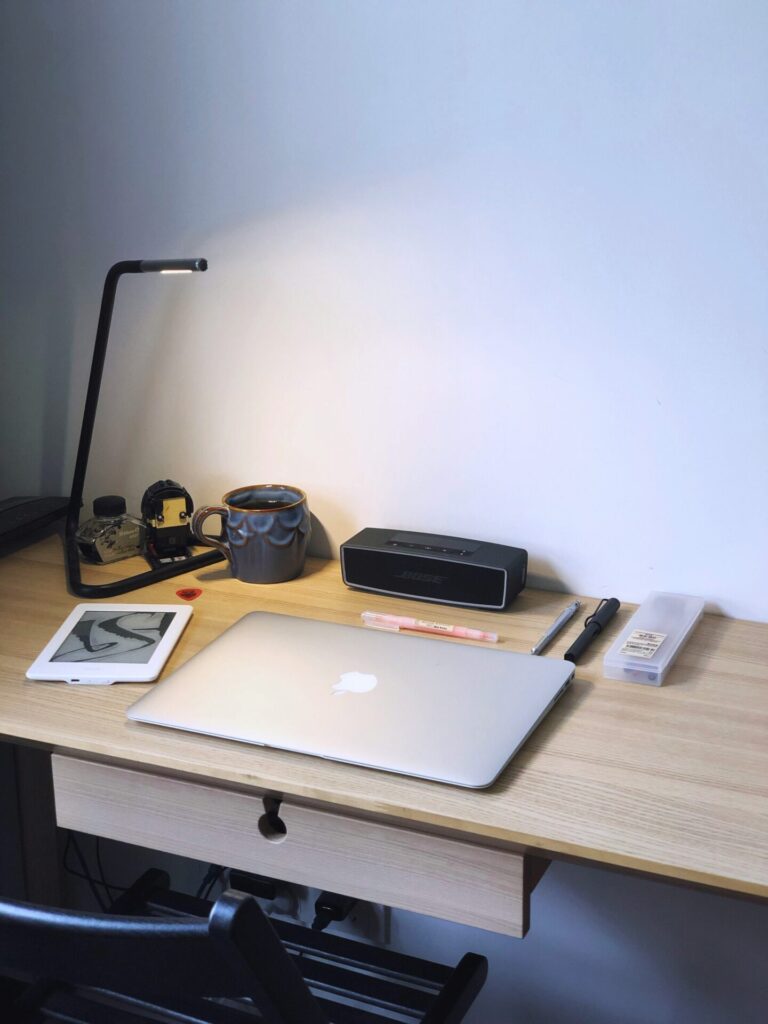How to Beat Test Anxiety: Tips Backed by Psychology
Test anxiety is a common experience that can turn an otherwise manageable exam into a daunting challenge. It’s that racing heart, sweaty palms, or the overwhelming sense that you’ve forgotten everything you studied. But the good news is that test anxiety doesn’t have to control you. With insights from psychology and evidence-based strategies, you can learn to manage and even overcome it. In this comprehensive guide, we’ll explore what test anxiety is, why it happens, and practical, science-backed tips to help you face exams with confidence. By the end, you’ll have a toolbox of techniques to tackle test anxiety head-on.
Understanding Test Anxiety: What’s Happening in Your Brain?
Test anxiety is more than just feeling nervous before an exam. It’s a psychological and physiological response to stress that can manifest as physical symptoms (like a racing heart or nausea), cognitive symptoms (such as negative thoughts or difficulty concentrating), and emotional symptoms (like fear or panic). According to the American Psychological Association, test anxiety affects up to 20% of students to a degree that impacts their performance.
The Science Behind It
When you face a high-stakes situation like a test, your brain’s amygdala—the fear center—kicks into gear. It triggers the release of stress hormones like cortisol and adrenaline, preparing your body for a “fight or flight” response. While this is great for escaping danger, it’s less helpful when you need to focus on a math problem. The prefrontal cortex, responsible for reasoning and problem-solving, can get hijacked by this stress response, leading to mental fog or blanking out.
Psychologists also point to the role of cognitive distortions—negative thought patterns like catastrophizing (“If I fail this test, my life is over”) or overgeneralizing (“I always mess up on tests”). These thoughts amplify anxiety, creating a vicious cycle where worry impairs performance which fuels more worry.

Why Does It Happen?
Test anxiety often stems from a combination of factors:
- Perfectionism: Setting unrealistically high standards can make even minor setbacks feel catastrophic.
- Fear of Failure: Societal or personal pressure to succeed can heighten the stakes.
- Lack of Preparation: Feeling underprepared can trigger panic.
- Past Experiences: Previous negative test experiences can create a feedback loop of anxiety.
Understanding these triggers is the first step to managing them. Now, let’s dive into practical, psychology-backed strategies to beat test anxiety.
Preparation Strategies: Build Confidence Before the Test

The foundation of overcoming test anxiety lies in preparation. Feeling ready for an exam can significantly reduce stress, as it gives you a sense of control. Here are evidence-based techniques to prepare effectively.
1. Master Active Study Techniques
Passive studying, like re-reading notes or highlighting, often feels productive but doesn’t stick. Instead, use active learning strategies, which research shows improve retention and reduce anxiety by boosting confidence.
- Practice Testing: Studies, like those by Roediger and Karpicke (2006), show that testing yourself during study sessions enhances long-term retention. Use flashcards, practice exams, or apps like Quizlet to simulate test conditions.
- Spaced Repetition: Spread out your study sessions over days or weeks rather than cramming. This leverages the spacing effect, which strengthens memory by allowing time for information to consolidate.
- Teach Back: Explain concepts to a friend, family member, or even yourself. Teaching forces you to process information deeply, reinforcing your understanding.
Action Step: Create a study schedule that incorporates practice tests and spaced repetition. For example, study a topic on Monday, review it briefly on Wednesday, and take a practice test on Friday.
2. Simulate Test Conditions
Familiarity reduces fear. By practicing in an environment that mimics the test, you desensitize yourself to the anxiety triggers of the real thing. This is rooted in exposure therapy, a psychological technique for reducing fear responses.
- Set up a timed practice test in a quiet space.
- Use the same tools (e.g., pencil, calculator) you’ll use during the exam.
- If possible, study in the same room or building where the test will take place.
Action Step: Take at least one full-length practice test under timed conditions a week before the exam. Grade it to identify weak areas and adjust your study plan.
3. Develop a Growth Mindset
Psychologist Carol Dweck’s research on growth mindset shows that believing you can improve through effort reduces anxiety and boosts performance. Instead of thinking, “I’m bad at math,” reframe it as, “Math is challenging, but I can get better with practice.”
- Reframe Failure: View mistakes as opportunities to learn rather than proof of inadequacy.
- Celebrate Progress: Acknowledge small wins, like mastering a difficult concept, to build confidence.
Action Step: Write down one limiting belief about your test-taking abilities (e.g., “I’m terrible at tests”). Then, reframe it into a growth-oriented statement (e.g., “I can improve my test performance with practice”). Keep this note visible while studying.
Mindset Shifts: Rewire Your Thoughts
Your thoughts shape your emotions, and negative thinking fuels test anxiety. Cognitive Behavioral Therapy (CBT), a well-researched psychological approach, offers tools to rewire these thoughts and reduce anxiety.
4. Challenge Cognitive Distortions
CBT teaches you to identify and challenge irrational thoughts. For example, if you think, “If I fail this test, I’ll never get into college,” ask yourself:
- Is this thought realistic? (No, one test doesn’t determine your future.)
- What evidence supports or contradicts it? (You’ve succeeded in other areas despite challenges.)
- What’s a more balanced thought? (“This test is important, but I have other opportunities to succeed.”)
Action Step: Keep a thought journal. When you feel anxious, write down the thought, challenge it with evidence, and replace it with a balanced alternative.
5. Practice Positive Visualization
Visualization, a technique used by athletes and performers, involves imagining a successful outcome. Studies, like those by Driskell et al. (1994), show that mental imagery can improve performance and reduce anxiety.
- Picture yourself walking into the test room calmly, answering questions confidently, and finishing with time to spare.
- Engage all your senses: imagine the feel of the pencil, the sound of the clock, and the satisfaction of knowing an answer.
Action Step: Spend 5 minutes daily visualizing a successful test day. Pair this with deep breathing to enhance relaxation.
6. Use Affirmations
Positive affirmations can counteract negative self-talk. Research by Sherman and Cohen (2006) suggests that self-affirmations reduce stress by reinforcing your sense of self-worth.
- Examples: “I am prepared and capable,” or “I can handle whatever this test throws at me.”
- Say affirmations out loud or write them down before studying or sleeping.
Action Step: Create 3-5 affirmations tailored to your test fears. Repeat them daily, especially before study sessions or the test itself.
Physical Techniques: Calm Your Body, Calm Your Mind

Test anxiety isn’t just mental—it’s physical. Your body’s stress response can amplify your anxiety, but you can use physiological techniques to dial it down.
7. Practice Deep Breathing
Deep breathing activates the parasympathetic nervous system, which counters the fight-or-flight response. A 2016 study in Frontiers in Psychology found that diaphragmatic breathing reduces cortisol levels and improves focus.
- Box Breathing: Inhale for 4 seconds, hold for 4 seconds, exhale for 4 seconds, hold for 4 seconds. Repeat 4-5 times.
- 4-7-8 Breathing: Inhale for 4 seconds, hold for 7 seconds, exhale for 8 seconds.
Action Step: Practice box breathing for 2 minutes before studying or entering the test room. Use it during the test if you feel panic rising.
8. Progressive Muscle Relaxation (PMR)
PMR involves tensing and releasing muscle groups to reduce physical tension. A 2018 study in The Journal of Clinical Psychology found that PMR significantly lowers anxiety levels.
- Start with your toes: tense them for 5 seconds, then release. Move up to your calves, thighs, and so on, up to your face.
- Focus on the sensation of relaxation as you release each muscle group.
Action Step: Practice PMR for 10 minutes the night before the test and again in the morning.
9. Optimize Sleep and Nutrition
Sleep deprivation and poor nutrition exacerbate anxiety. A 2019 study in Nature linked poor sleep to heightened amygdala activity, worsening stress responses. Similarly, high-sugar or caffeine-heavy diets can spike anxiety.
- Sleep: Aim for 7-9 hours of sleep nightly, especially the week before the test. Stick to a consistent sleep schedule.
- Nutrition: Eat balanced meals with protein, healthy fats, and complex carbs. Avoid heavy meals or excessive caffeine on тест day.
Action Step: Plan a sleep schedule that ensures 8 hours of rest the night before the test. On test day, eat a light, balanced breakfast (e.g., oatmeal with fruit and nuts).
Test-Day Strategies: Stay Calm and Focused
Even with great preparation, test day can bring unexpected nerves. These strategies will help you stay grounded and perform at your best.
10. Arrive Early and Prepared
Rushing increases stress. Arrive at the test location 15-30 minutes early with all necessary materials (ID, pencils, calculator, etc.). Familiarity with the test format and rules also reduces uncertainty.
Action Step: Pack a test-day bag the night before with all required items. Double-check the test location and time.
11. Use Grounding Techniques
Grounding techniques anchor you in the present, preventing your mind from spiraling. Try the 5-4-3-2-1 technique:
- Name 5 things you see.
- Name 4 things you can touch.
- Name 3 things you hear.
- Name 2 things you smell.
- Name 1 thing you taste.
Action Step: Practice the 5-4-3-2-1 technique during a practice test to make it second nature.
12. Manage Time Effectively
Feeling rushed during a test can trigger panic. Use time management strategies to stay in control:
- Skim the test to gauge its length and prioritize easier questions.
- Allocate time per section (e.g., 1 minute per multiple-choice question).
- If stuck on a question, skip it and return later to avoid wasting time.
Action Step: During practice tests, track how long each section takes and adjust your pacing.
13. Reframe Physical Symptoms
Your racing heart or sweaty palms aren’t necessarily bad—they’re signs your body is energized. A 2013 study by Jamieson et al. found that reframing anxiety as excitement (“I’m pumped for this challenge!”) improves performance.
Action Step: When you feel physical anxiety symptoms, say to yourself, “This is my body getting ready to succeed.”
Post-Test Reflection: Learn and Move Forward
After the test, it’s tempting to obsess over what went wrong, but this can fuel future anxiety. Instead, use reflection to grow.
14. Conduct a Post-Test Analysis
Write down what went well and what didn’t. Did you feel prepared? Did a specific strategy help? This reflection, rooted in metacognition (thinking about your thinking), helps you improve for next time.
Action Step: After the test, spend 10 minutes journaling about your experience. Note one thing you did well and one area to improve.
15. Practice Self-Compassion
Be kind to yourself, regardless of the outcome. Kristin Neff’s research on self-compassion shows it reduces anxiety and builds resilience. Remind yourself that one test doesn’t define your worth.
Action Step: Write a short letter to yourself post-test, acknowledging your effort and encouraging future growth.
Long-Term Strategies: Build Resilience
Test anxiety doesn’t disappear overnight, but consistent practice can make it manageable. Incorporate these habits into your routine to build resilience.
16. Develop a Mindfulness Practice
Mindfulness meditation reduces anxiety by training your brain to stay present. A 2014 meta-analysis in JAMA Internal Medicine found that mindfulness programs significantly lower stress levels.
- Use apps like Headspace or Calm for guided meditations.
- Start with 5-10 minutes daily, focusing on your breath or body sensations.
Action Step: Try a 5-minute guided meditation daily for two weeks and note any changes in your anxiety levels.
17. Seek Support When Needed
If test anxiety feels overwhelming, consider professional help. Cognitive Behavioral Therapy (CBT) is highly effective for anxiety, and school counselors or psychologists can offer tailored strategies.
Action Step: If anxiety persists, reach out to a school counselor or therapist to discuss CBT or other interventions.

Conclusion: You’ve Got This
Test anxiety is a challenge, but it’s not insurmountable. By combining preparation, mindset shifts, physical techniques, and test-day strategies, you can take control of your nerves and perform at your best. The key is consistency—practice these techniques regularly, not just the night before the test. Over time, you’ll build not just exam skills but lifelong resilience against stress.
Remember, tests are just one part of your journey. You’re more than a score, and every challenge is a chance to grow. So take a deep breath, trust your preparation, and walk into that test room ready to shine.

